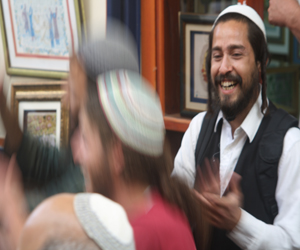The Lead In To The Yiddish Cultural Explosion
Ashkenazi Jewry was, at all times, subject to the political turmoil surrounding them in the various countries in which they lived: Poland, Russia, Austria, and in the Ottoman-ruled areas of Europe. Boundaries were in constant flux and the figureheads in power seemed to change identities on a regular basis. Some of the fallout was bound to affect the Jews and this was seen whenever tempers were at a boil over one issue or another. The local populace would ride into Jewish areas and massacre Jews until their thirsty anger was quenched. These massacres were called pogroms.
Blood Lust
The pogroms began in the 17th century but reached their blood-lusting peak in the late 19th and early 20th centuries. As a result, many Jews chose to leave Europe for the shores of North and South America. There they joined the well-established Sephardic Jewish communities and in time, outnumbered their Sephardic counterparts, becoming the dominant Jewish presence in those lands. Between the years 1880-1914, almost one third of Eastern Europe's Jewish population left, and of these, some 2.5 million Jews immigrated to the United States.
In Europe, the klezmorim had a heavy dependence on local guilds but in the 20th century, the union took over the role of the guilds. Immigrants were excluded from the American Federation of Musicians Union, so the immigrants to America started their own union known as The Russian Progressive Musicians Union. In addition to overseeing the welfare of the musicians, the union was the address for hiring a band for an event. Besides the benefits received from the union, immigrants also found relief through individual groups formed for those with a common birthplace. These groups were called Landsmanshaften. The role of the Landsmanshaft was to provide friendship, health benefits, burial funding, and employment. Not much different than the union, the Landsmanshaft was another resource for immigrants to call on.
Political Stripes
Amateur musicians found other opportunities, for instance in workers' choruses or in mandolin orchestras. A chorus could be found to fit every political stripe from the soviet-minded Freiheit Gezangs Ferain, the socialist Arbeiter Ring, and on to the labor Zionist-oriented Poale Zion Singing Society, who sang only in Hebrew.
Just as in the Old Country, the American klezmorim played weddings, and as time went on, became popular at bar mitzvahs, too. While the master of ceremonies so integral to the klezmer experience, the badchan, faded into the sunset of time, the caterer or the maitre d' stepped in to take his place. American popular music entered the klezmer repertoire so that events were accompanied by a mixture of old and new tunes. While weddings lasted an entire week back in the Alte Heim, weddings in America lasted one day and carried with it far fewer rituals. Some of the old flavor remained, for instance, the band's clarinetist continued to exit the stage between the soup and the main course and perform a Doina for the wedding guests.
From the early 20th century and on, there was a boom in popular culture and entertainment and klezmer was an integral part of this explosion. While the hub of burgeoning Yiddish culture could be found in New York City, a similar Yiddish cultural eruption was taking place in other parts of both North and South America as well as in Europe. Wherever there were Ashkenazi Jews, Yiddish culture bloomed.

